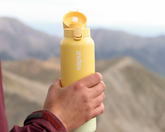The fashion industry is a huge consumer of water reserves. According to Forbes, the industry used 79 billion cubic meters of water every single year, with 80-90% of the wastewater produced from that returned to water bodies - untreated. Furthermore, the supply chain that provides western stores with fast fashion often make use of workers who are toiling in less-than-ideal conditions, in housing and manufacturing units that also do very little to fight against water insecurity. From production, all the way to the retail floor, fashion needs to do more.
Starting in the factory
Many of the cheaply produced clothes that westerners rely on come from factories in South and East Asia. While conditions have improved immeasurably in these countries over the past few years, there is still significant water insecurity in many. According to advocacy organization Water.org, this includes Bangladesh, where over 1.8 million people - many of who are employed in garments manufacturing - do not have safe access to water. Clothes companies can help here. Initiatives such as the Thirst Project and Habitat for Humanity are sponsored by garment manufacturers, and use their position as the employer and workplace to provide good quality and fully clean and accessible water to employees. This means fairer access to water, and also less wasted water through the impact of poor quality dwellings.
Clearing the wastewater
Securing the human rights of employees is an important first step, but actions also must be taken to reform the sanitation process of the factories themselves. According to CNN, clothing is responsible for up to 20% of all wastewater pollution. This actively damages the oceans as well as contaminates drinking sources. With droughts becoming more common and coral reefs dying, this is an urgent challenge for manufacturers and legislators to get ahead of. If garment manufacturers can start properly filtering and correcting their wastewater, it’ll ensure the health of water stocks - which also means those out and about exercising can reliably drink from springs, lakes, and the like.
Urban stores
Just as the manufacturers pollute, so do the urban stores themselves. As highlighted in a 2021 Nature.com journal, urban populations are already responsible for severe river pollution in many urban areas across the world, east or west. This is due to many factors, but the impact of clothes stores is undeniable. Furthermore, clothing stores remain one of the most relevant and long-lasting stores despite the impact of ecommerce on brick-and-mortar. Their impact will continue to be felt on rivers, and that impacts the ability of everyday people to enjoy freshwater and for the cities they exist in to enjoy clean water.
As a whole, the clothing industry needs to clean up its act. That’s true at the source, in providing hydration and sanitation for workers, and at the end of the process, in the modern urbanized city. With 20% of water flowing through these businesses, there’s a lot to do.



